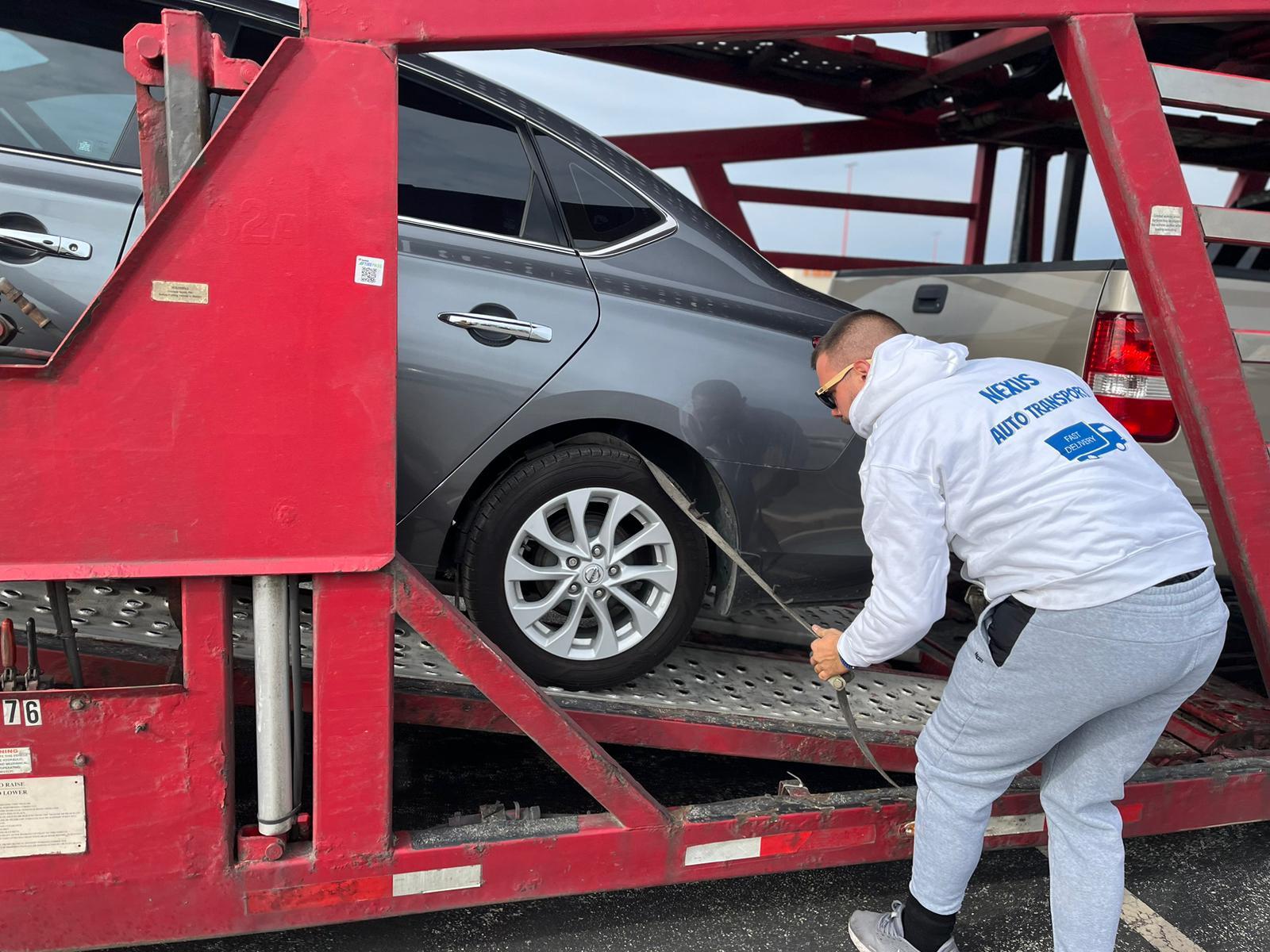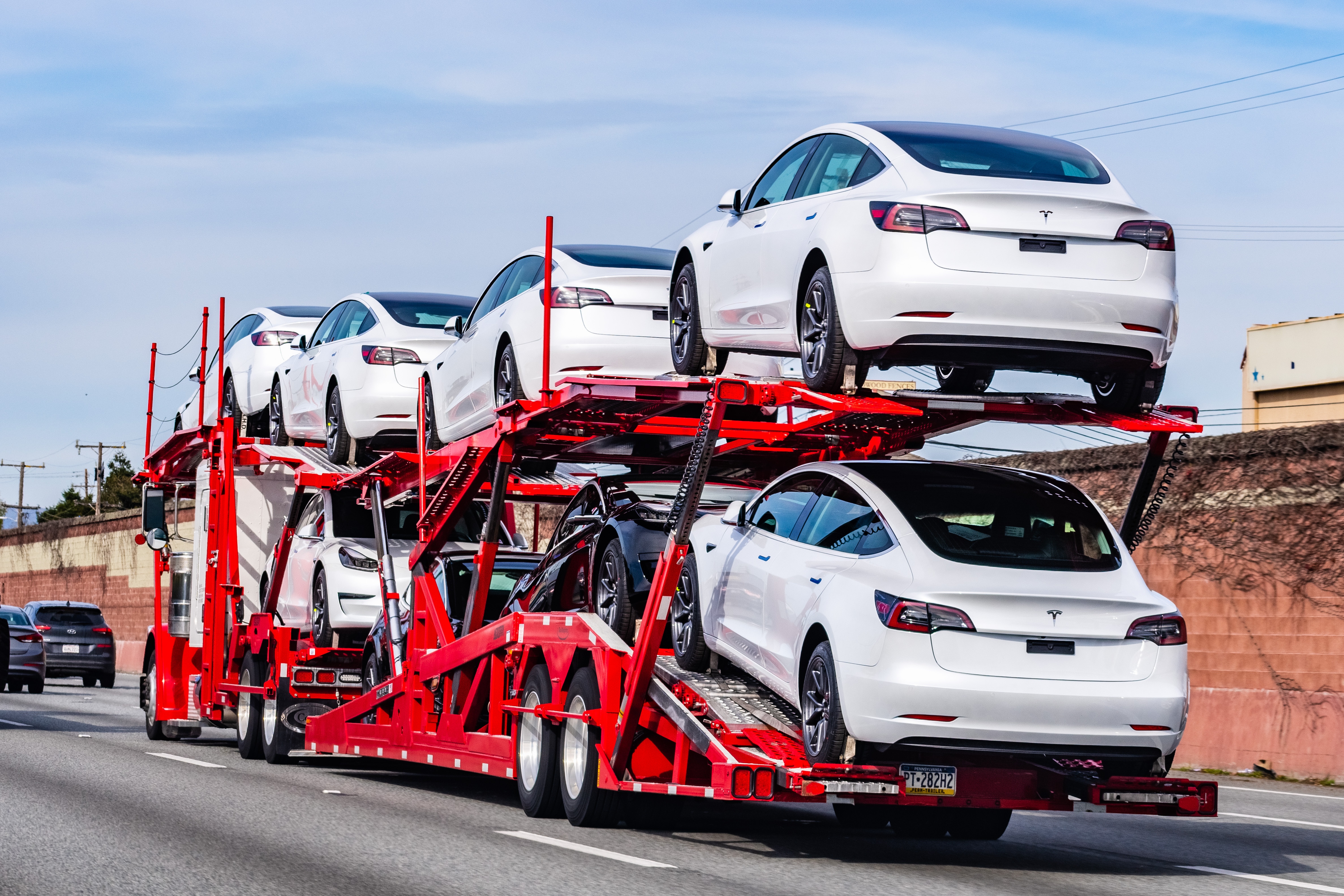Maybe you bought a car online from an auction, dealer, or private seller, you’re relocating, or you have multiple vehicles to send to your dealership. Whatever the reason, car shipping is an option that many car owners rely on to move their cars without driving them themselves.
Auto transport or car transport is a safe and convenient way to transport a vehicle from state to state, across the country, or internationally. If car shipping is new to you and you’re wondering “how are cars shipped?”, here’s a breakdown of the whole process.
How Are Cars Transported? An Overview of Car Shipping Methods
Cars may be shipped by road, air, rail, and ocean. However, the most common option for shipping within the US is by road using specialized trailers for hauling cars. Ocean shipping with shipping containers is often used for international shipping or transporting vehicles to Alaska or Hawaii.
Open Auto Transport
Also known as open car transport, open auto transport is one of the most common and cost-effective shipping methods. Open auto shipping is ideal for both single-car shipping and bulk car shipping for vehicles.
Auto transport carriers may use dual-level or multi-level trailers that can handle eight to 10 vehicles at a time or flatbed trailers. These options are cost-effective because you only pay for the space occupied by your car, so the costs are essentially split between all the vehicles on the carrier.
Though there are cost benefits, open-air car transport has some downsides. This option may be slower because the carrier has to pick up and drop off vehicles along the way. It also leaves your vehicle exposed to the elements and road debris on the ride. For a daily-use vehicle, the risks are no different from regular driving, however.
Enclosed Transport
Enclosed auto transport is an option typically reserved for classic, exotic, custom, or otherwise rare vehicles that warrant extra protection from road hazards. Dealerships may use enclosed transport to haul multiple new vehicles and ensure they don’t get any scratches or dents from flying rocks, snow, or hail.
Shipping with an enclosed trailer is more expensive than open air, but it often has less wait time because shippers aren’t picking up and delivering a lot of vehicles along the same route. Depending on the model, enclosed trailers hold from one to eight vehicles.
Container Shipping
Container car shipping is used to ship cars overseas using container ships with 20-foot or 40-foot containers. A 20-foot container can fit one car, while a 40-foot container can fit two standard-sized cars. Special containers may be available for larger vehicles.
To ship by container, cars are driven into the container, and then secured in the proper position using ratchet straps and chocks to avoid movement in transit. Some containers have an internal loading rack that’s installed first, which the car is driven into, or an external loading rack, which cars are loaded onto first.
The Process of Shipping Cars
The first step for auto transportation is knowing when and where you need to get your car transported. You can contact auto shipping companies and provide this information to get a shipping quote. To provide the quote, shipping companies may need the pickup and drop-off location, the car’s make, model, size, color, value, and year, and your preferred mode of transport.
In fact, you can request a quote with this information right here on our website using our auto transport calculator.
Once you receive quotes and choose a shipping company, you will schedule your pickup date and prepare your vehicle for transport, which includes gathering the necessary paperwork and removing valuables from your vehicle. Car shipping is fairly straightforward, but you will need the vehicle’s title and registration, proof of insurance, and a valid driver’s license or photo ID.
Upon pickup, you’ll need to sign the bill of lading. The bill of lading is your legal contract with the auto shipping company and serves as a receipt and inspection report for your car shipping. This must be signed upon pickup and delivery of your vehicle to protect both parties against damage or fraud. Check that it has details like the name of the company, your vehicle information and condition, the date and pickup and delivery locations, and the price.
Though door-to-door shipping may be available from some shipping companies, most auto shippers have shipping terminals where you can drop off your car. They may ask that you drop off your car a few days before your scheduled shipping date.
On shipping day, cars are loaded onto the trailer and secured in place so they won’t shift during transport, and then the trailer is attached to a truck. The shipment is on its way, and your car will either be dropped off at a terminal or your desired destination, depending on the services you choose.
Preparing Your Car for Shipping
When you pay to have a car shipped, most of the work is done by the car shipping company. However, you do have to prepare your car for shipping to ensure everything runs smoothly.
Clean your car: Having a clean car at pickup is important to identify any dents, scratches, or other damage. Make sure you wash your car thoroughly, inside and out, before pickup.
Take pictures and videos: You have to document your vehicle in advance as proof if damage occurs on the trip. Take photos and videos of the entire exterior and interior at different angles. Make sure to take a lot of pictures of any existing damage, such as dents or scratches.
Remove personal belongings: Take everything loose out of your vehicle, including spare change, toolkits, phone chargers, air fresheners, and anything else you have in your car.
Disable the alarm: If your vehicle has an alarm, disable it in advance to ensure that it doesn’t go off during shipping.
Don’t fill the gas tank: Your vehicle only needs enough gas to drive onto and off of the trailer, so there’s no need to fill the tank. Leaving the tank at ¼ is enough. Plus, having less gas in the tank reduces the overall weight of your car.
Check tire pressure and fluids: Under-inflated or over-inflated tires and leaking fluids can be hazardous during shipments. Check your undercarriage for leaks and get them repaired, and verify that the tires are properly inflated.
Remove custom accessories: Car accessories can be damaged in transit and make shipping more complicated. Remove ski racks, bike racks, custom spoilers, and other accessories before shipping.
Choosing the Right Car Shipping Company
Choosing the right car shipping company is crucial to ensuring your car arrives safely and on time. Here are some tips:
Consider your needs: Will you need an enclosed trailer for a specialty car? Do you have a set time you need to ship or is it flexible? Will you need extra services, such as door-to-door shipping? Think about what you need before you start looking for shipping companies.
Do your research: Thoroughly research any companies you’re interested in using. Evaluate their services, check the Better Business Bureau, and read customer reviews. Note any negative reviews, what went wrong, and how the company responded to the complaint. This will tell you a lot about how they run their business.
Get a quote: Request quotes from several shipping companies to compare costs and determine the best option for your needs.
Ask questions: Reach out to companies you’re interested in and discuss their shipping process. When you’re finished, you should have plenty of information about how long the process takes, their licensing, what services they offer, the insurance they have, their delivery options, and their payment process.
Look for transparency: Unfortunately, car shipping scams or unscrupulous companies with hidden fees do exist. Make sure the quotes you get are all-inclusive and the company has experience and a positive reputation in the industry.
Cost Factors in Car Shipping
Car shipping costs can vary significantly from one load to another. Here are some factors that go into the costs:
Distance: The miles your vehicle has to travel from pickup to drop-off are the biggest influence in the shipping quote. Generally, the farther the distance, the more expensive your shipping will be. However, the cost per mile reduces with the number of miles, so it can be more cost-effective.
Transport type: Enclosed trailers are more expensive than open-air trailers, which are the most economical option.
Location: Shipping between major cities on highly trafficked routes may be less expensive than between remote or rural areas.
Season: Shipping a car during a peak season (summer) can increase the price. Holiday shipping may also be more expensive because of demand.
Vehicle size and weight: Larger, heavier vehicles are more expensive to ship than lighter, smaller cars.
Vehicle condition: Transporting a drivable vehicle is cheaper than transporting a vehicle that doesn’t run because the shipping company will need special equipment to load an inoperable car onto a trailer.
Specialty vehicles: If you’re transporting a luxury, classic, custom, or exotic car, it’s often more expensive to insure and ship. You should also use an enclosed trailer, which is more expensive.
Fees: Surcharges may be added for extra insurance, additional storage, fuel, and rushed delivery.
Contact Nexus Auto Transport to Book Car Shipping
Car shipping is a convenient and secure option to get your car from point A to point B safely whether you’re moving, buying a car from out of state, or going on an extended vacation. With the right shipping company, the process is straightforward. Once you do the legwork to find a car shipper and prepare your car, pickup, loading, transport, and delivery are taken care of.
Looking to ship your car? Contact Nexus Auto Transport for more information or to schedule a car shipping service!
FAQs
Are Cars Shipped in Containers?
Ocean freight is often used to ship cars overseas using containers because it’s safe, cost-effective, and convenient. Cars are driven into 20-foot or 40-foot containers, secured into position, and loaded onto the ship.
Is Car Shipping Safe?
Yes, car shipping is safe and secure when you choose an experienced and reputable shipping company. Damage is rare, but you may prefer the added protection of an enclosed trailer for high-value vehicles.
How Long Does It Take to Ship a Car?
The time to ship a car depends on many factors, including how far it’s going and how difficult the route is. Typically, a car takes about three days to travel 1,000 miles, which can increase to a week when it’s traveling 3,000 miles or more.
Can I Put Stuff in My Car When I Ship It?
Some shippers may allow you to put a few items in your car during shipping, but it depends on the company. Generally, everything inside your car will need to be removed.



